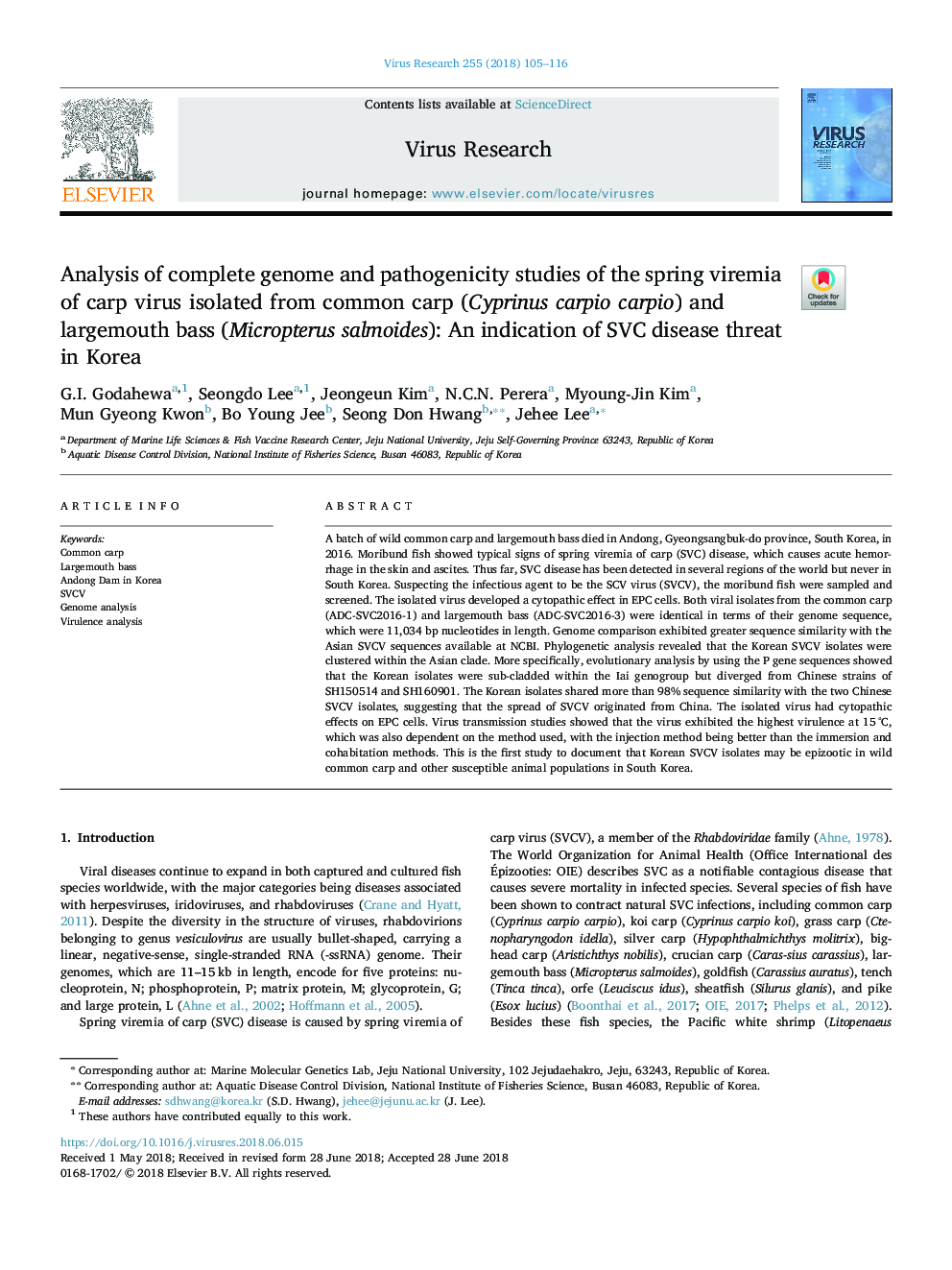| Article ID | Journal | Published Year | Pages | File Type |
|---|---|---|---|---|
| 8751671 | Virus Research | 2018 | 12 Pages |
Abstract
A batch of wild common carp and largemouth bass died in Andong, Gyeongsangbuk-do province, South Korea, in 2016. Moribund fish showed typical signs of spring viremia of carp (SVC) disease, which causes acute hemorrhage in the skin and ascites. Thus far, SVC disease has been detected in several regions of the world but never in South Korea. Suspecting the infectious agent to be the SCV virus (SVCV), the moribund fish were sampled and screened. The isolated virus developed a cytopathic effect in EPC cells. Both viral isolates from the common carp (ADC-SVC2016-1) and largemouth bass (ADC-SVC2016-3) were identical in terms of their genome sequence, which were 11,034 bp nucleotides in length. Genome comparison exhibited greater sequence similarity with the Asian SVCV sequences available at NCBI. Phylogenetic analysis revealed that the Korean SVCV isolates were clustered within the Asian clade. More specifically, evolutionary analysis by using the P gene sequences showed that the Korean isolates were sub-cladded within the Iai genogroup but diverged from Chinese strains of SH150514 and SH160901. The Korean isolates shared more than 98% sequence similarity with the two Chinese SVCV isolates, suggesting that the spread of SVCV originated from China. The isolated virus had cytopathic effects on EPC cells. Virus transmission studies showed that the virus exhibited the highest virulence at 15â°C, which was also dependent on the method used, with the injection method being better than the immersion and cohabitation methods. This is the first study to document that Korean SVCV isolates may be epizootic in wild common carp and other susceptible animal populations in South Korea.
Related Topics
Life Sciences
Immunology and Microbiology
Virology
Authors
G.I. Godahewa, Seongdo Lee, Jeongeun Kim, N.C.N. Perera, Myoung-Jin Kim, Mun Gyeong Kwon, Bo Young Jee, Seong Don Hwang, Jehee Lee,
